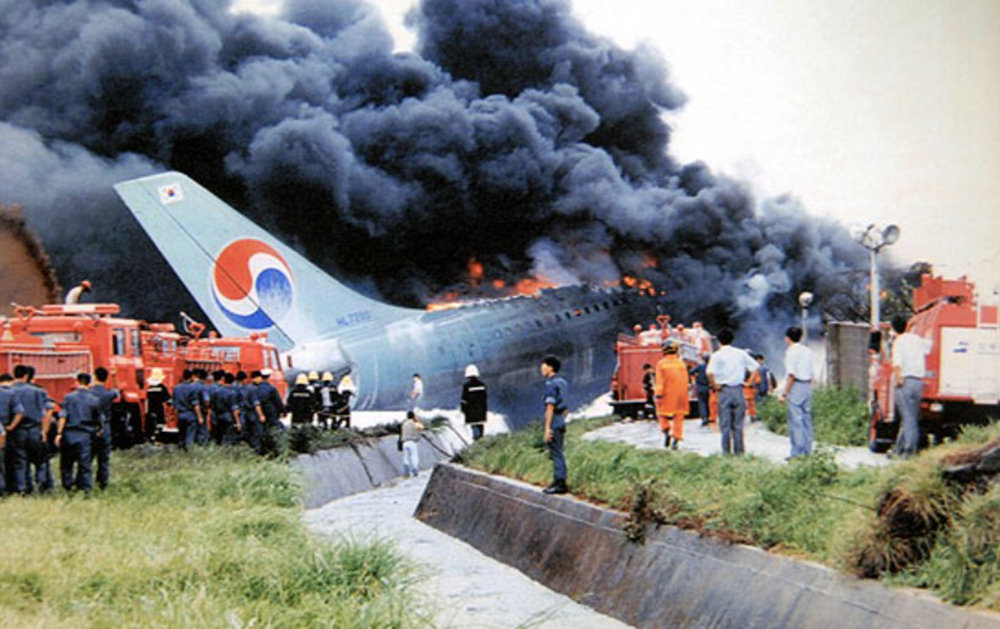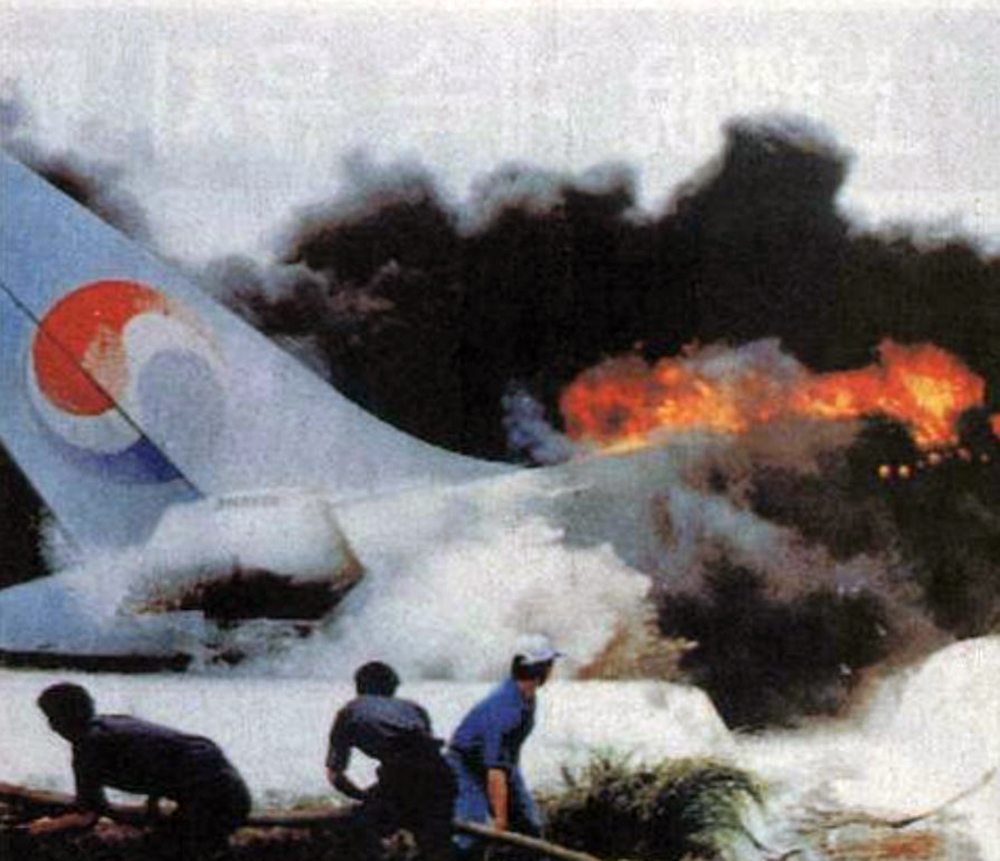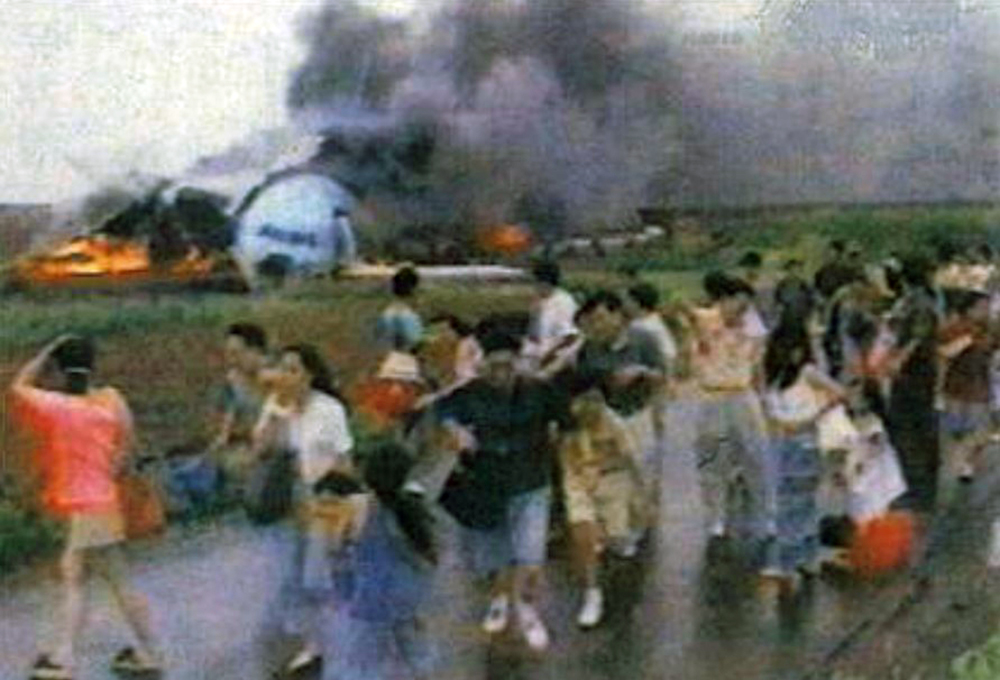Country
Operator Image

Crash of a McDonnell Douglas MD-83 in Pohang
Date & Time:
Mar 15, 1999 at 1155 LT
Registration:
HL7570
Survivors:
Yes
Schedule:
Seoul - Pohang
MSN:
53485
YOM:
1996
Flight number:
KE1533
Crew on board:
6
Crew fatalities:
Pax on board:
150
Pax fatalities:
Other fatalities:
Total fatalities:
0
Circumstances:
On approach to Pohang Airport, the crew encountered poor weather conditions with rain falls and strong winds. The captain decided to initiate a go-around procedure and started a second approach few minutes later. On approach to runway 10, the wind component changed and the crew continued the descent with a 20 knots tailwind. At an excessive speed of 158 knots, the aircraft landed 1,500 feet past the runway threshold. On a wet runway surface, the aircraft was unable to stop within the remaining distance (runway 10 is 7,000 feet long), overran, struck a 3 metres high embankment and came to rest in a ravine, broken in two. All 156 occupants were rescued, among them 60 passengers were injured, two seriously.
Probable cause:
The following findings were identified:
- Poor crew action during an approach in poor weather conditions,
- Excessive tailwind component,
- Misuse of brake and thrust reverser systems during the landing roll, about 27 seconds after touchdown only,
- The crew failed to initiate a go-around procedure as the landing was obviously missed,
- Poor ground assistance.
- Poor crew action during an approach in poor weather conditions,
- Excessive tailwind component,
- Misuse of brake and thrust reverser systems during the landing roll, about 27 seconds after touchdown only,
- The crew failed to initiate a go-around procedure as the landing was obviously missed,
- Poor ground assistance.
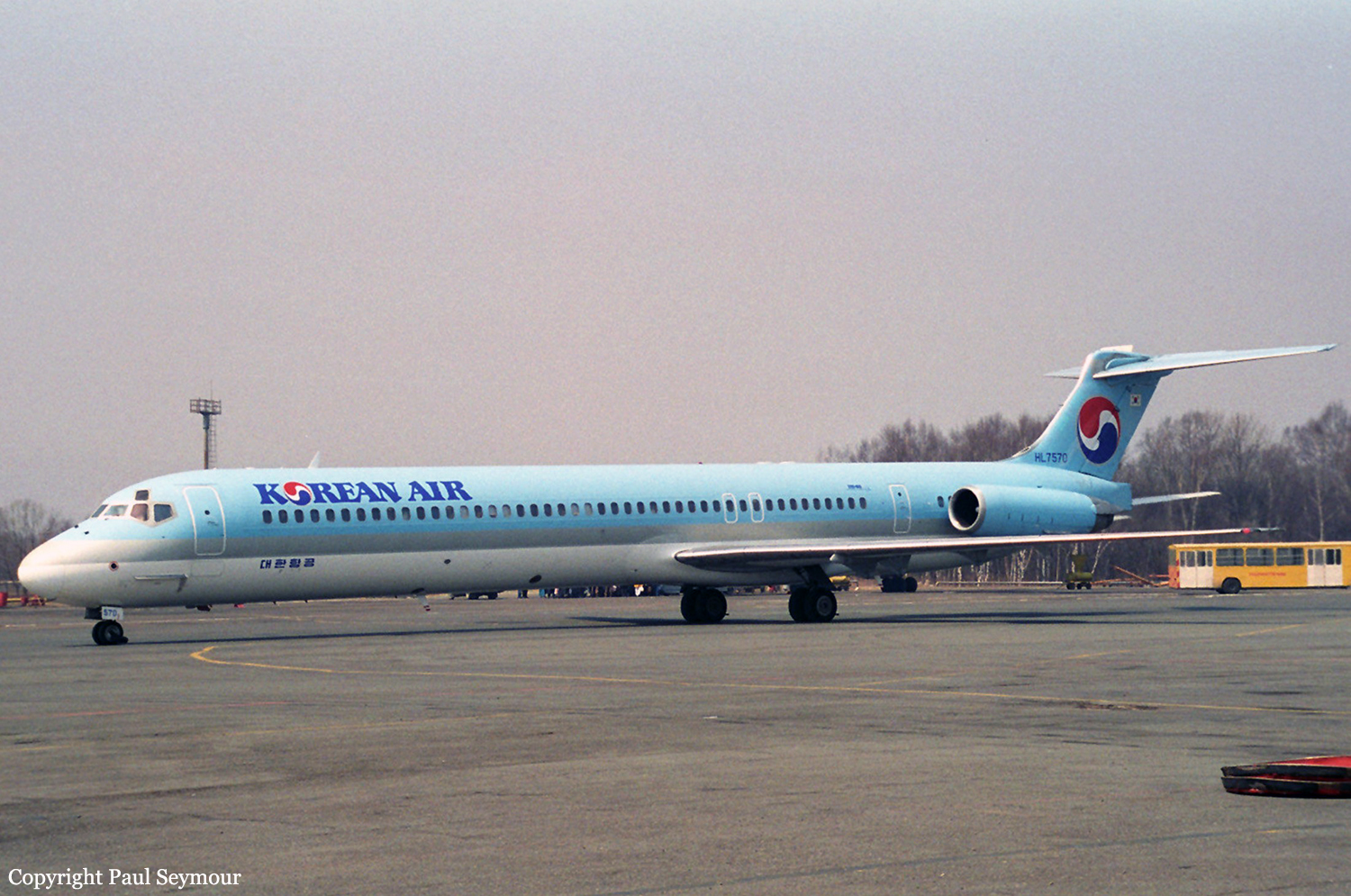

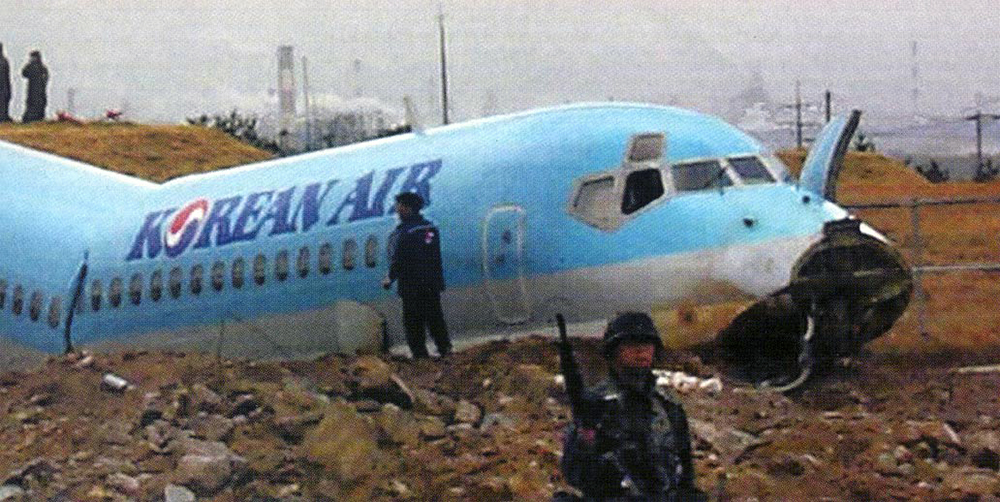
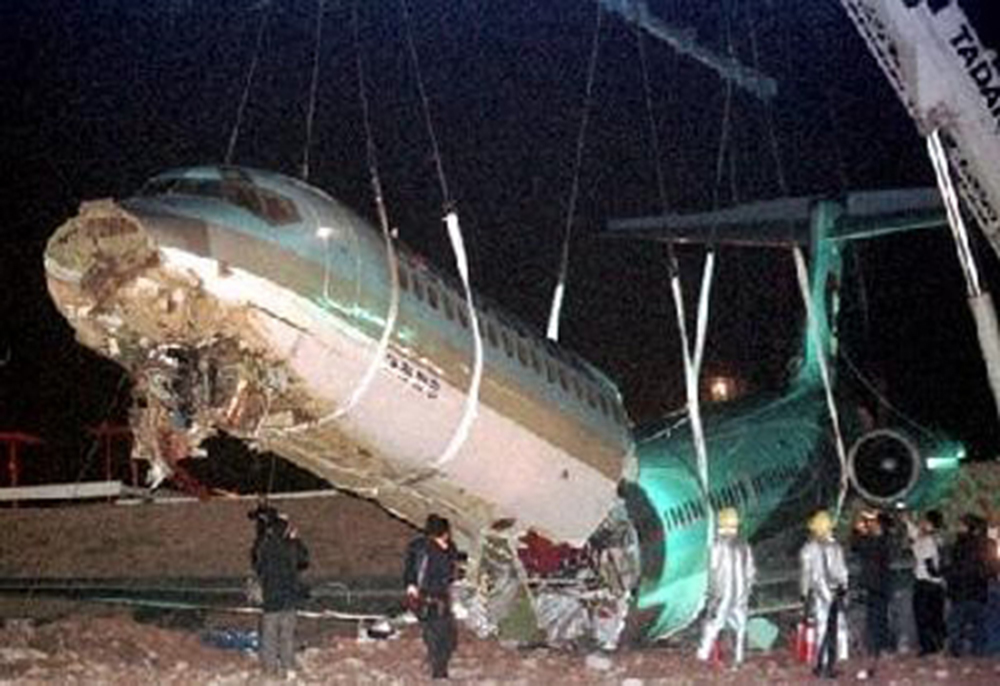

Crash of a Boeing 747-4B5 in Seoul
Date & Time:
Aug 5, 1998 at 2201 LT
Registration:
HL7496
Survivors:
Yes
Schedule:
Tokyo - Jeju - Seoul
MSN:
26400
YOM:
1996
Flight number:
KE8702
Crew on board:
16
Crew fatalities:
Pax on board:
379
Pax fatalities:
Other fatalities:
Total fatalities:
0
Circumstances:
Originally, the flight was a direct one from Tokyo-Narita to Seoul but due to poor weather conditions at destination, the crew diverted to Jeju. The aircraft departed Jeju Airport at 2107LT on the final leg to Seoul-Gimpo Airport. At destination, weather conditions were still poor with heavy rain falls and wind from 220 gusting to 22 knots. After touchdown on runway 14R, the crew started the braking procedure but the aircraft deviated to the right and veered off runway. While contacting soft ground, the aircraft lost its undercarriage and came to rest. All 395 occupants evacuated, among them 20 were slightly injured. The aircraft was damaged beyond repair.
Probable cause:
It was determined that the loss of control after touchdown was the consequence of the captain's misuse of the thrust reverser during the landing roll and his confusion over crosswind conditions. Investigations revealed that after touchdown, the n°1 engine thrust reverser did not deploy because the n°1 engine power lever's position did not allow the reverser to be deployed. The following contributing factors were identified:
- Poor weather conditions,
- Cross wind component,
- Wet runway surface,
- Poor braking action.
- Poor weather conditions,
- Cross wind component,
- Wet runway surface,
- Poor braking action.
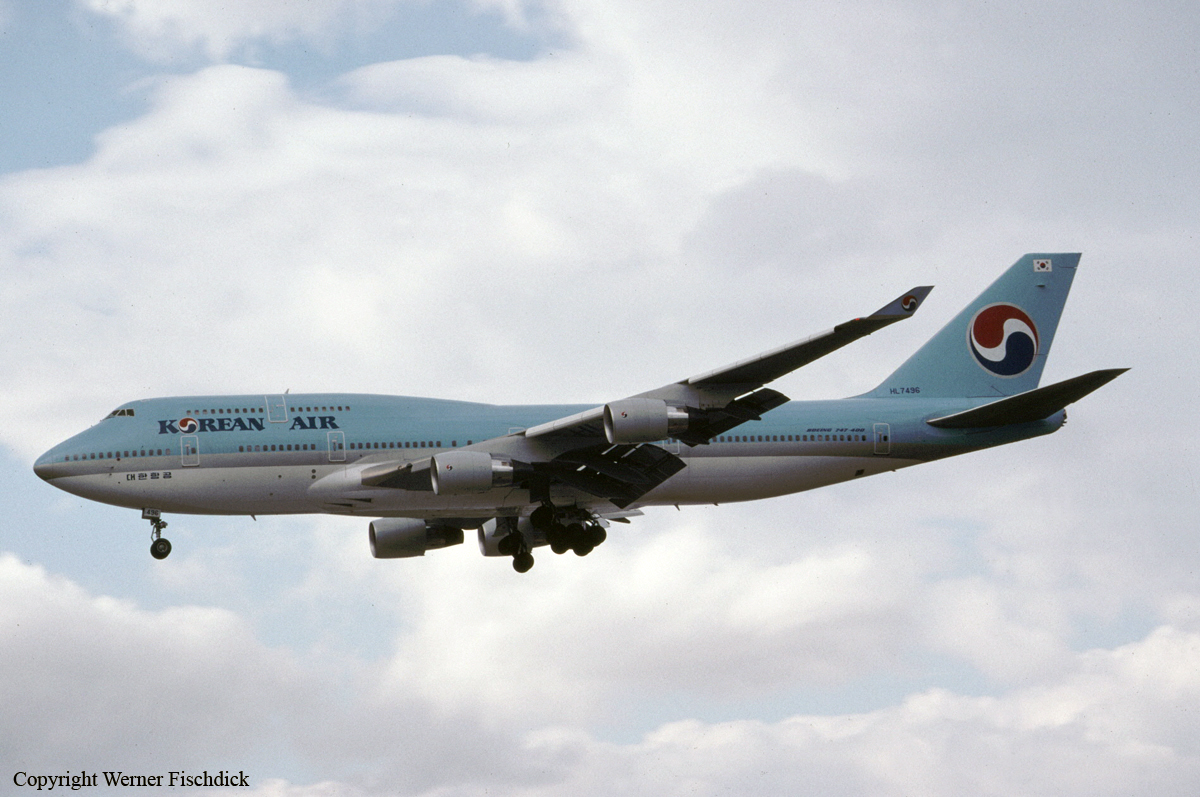
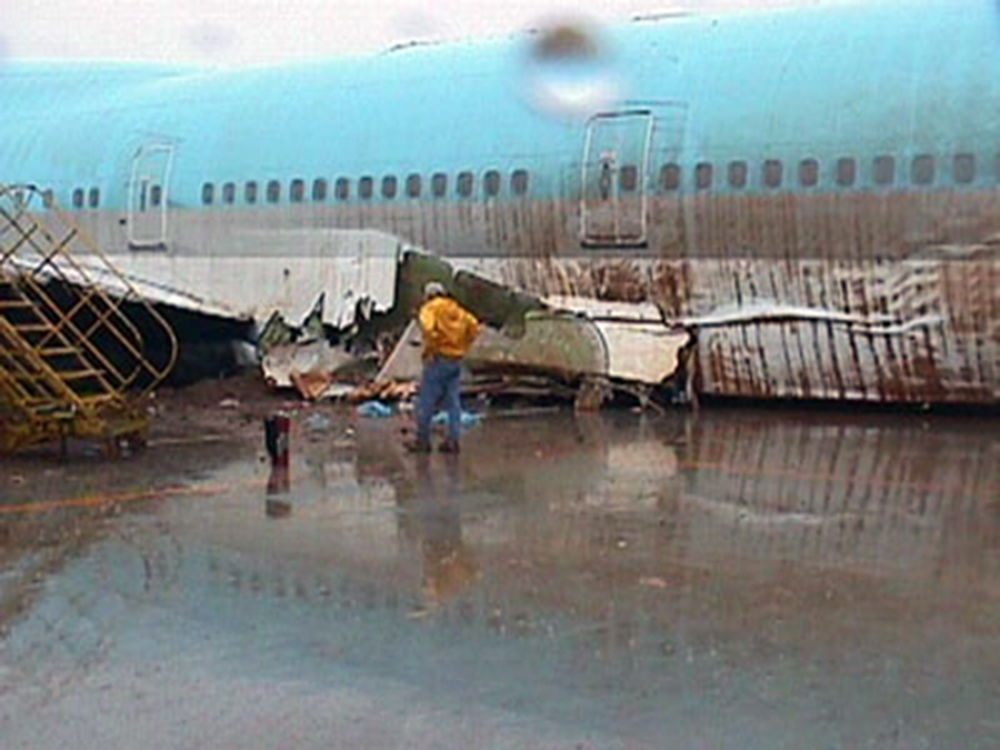
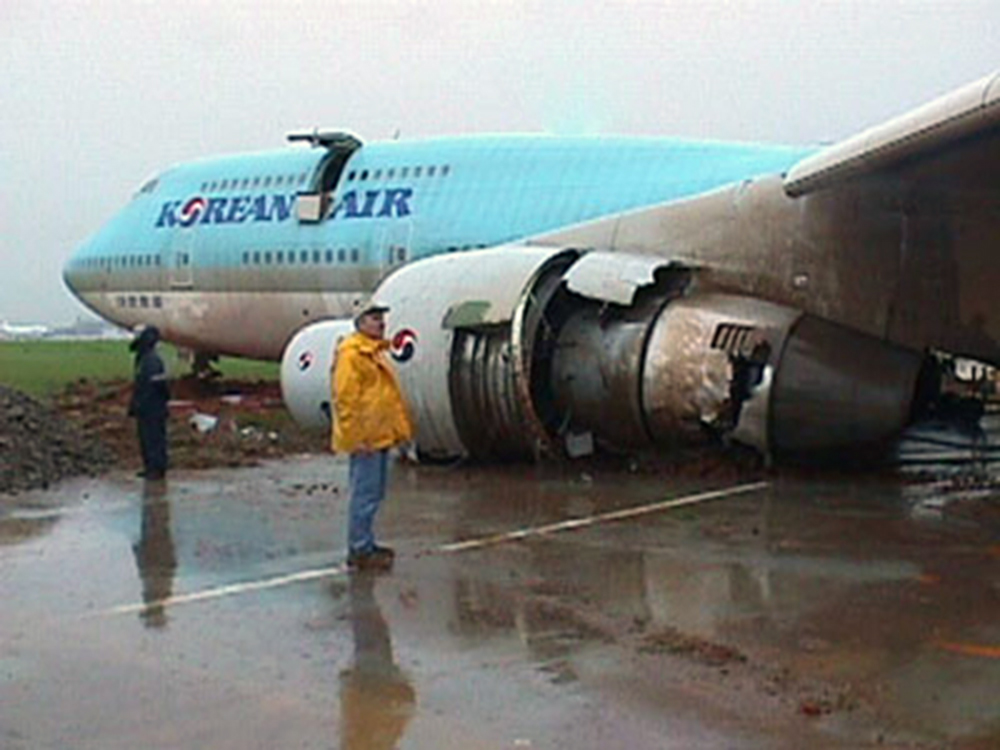
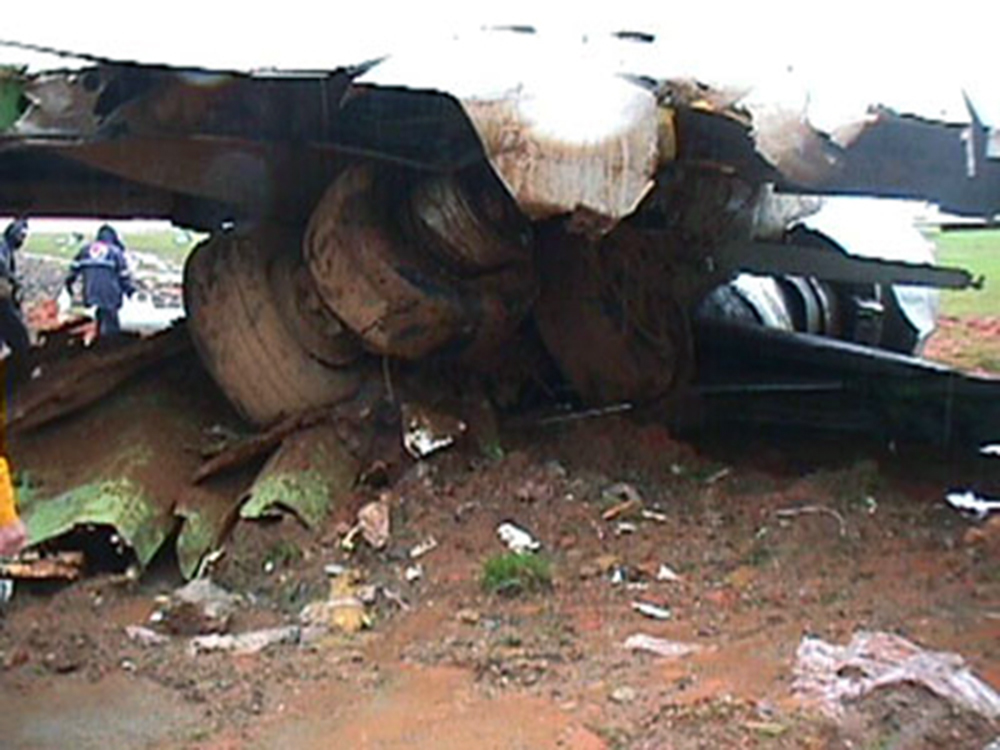
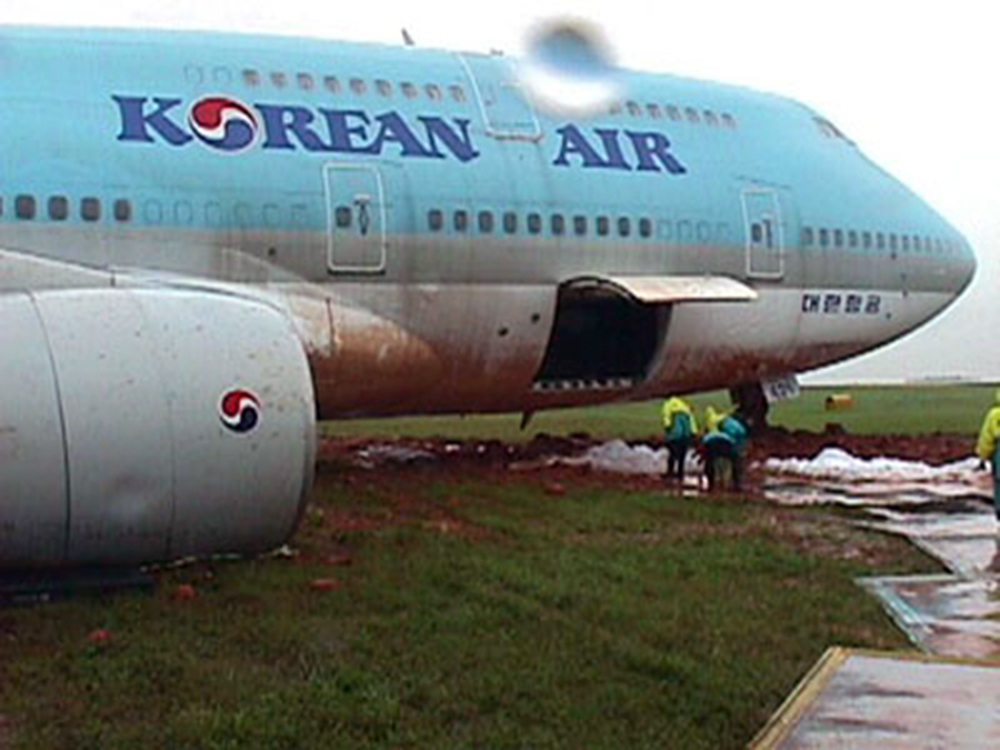

Crash of a Boeing 747-3B5 in Agana: 228 killed
Date & Time:
Aug 6, 1997 at 0142 LT
Registration:
HL7468
Survivors:
Yes
Schedule:
Seoul - Agana
MSN:
22487
YOM:
1984
Flight number:
KE801
Crew on board:
17
Crew fatalities:
Pax on board:
237
Pax fatalities:
Other fatalities:
Total fatalities:
228
Captain / Total hours on type:
1718.00
Copilot / Total hours on type:
1560
Aircraft flight hours:
50105
Aircraft flight cycles:
8552
Circumstances:
Korean Air Flight 801 was a regular flight from Seoul to Guam. The Boeing 747-300 departed the gate about 21:27 and was airborne about 21:53. The captain was pilot-flying. Upon arrival to the Guam area, the first officer made initial contact with the Guam Combined Center/Radar Approach Control (CERAP) controller about 01:03, when the airplane was level at 41,000 feet and about 240 nm northwest of the NIMITZ VOR/DME. The CERAP controller told flight 801 to expect to land on runway 06L. About 01:10, the controller instructed flight 801 to "...descend at your discretion maintain two thousand six hundred." The first officer responded, "...descend two thousand six hundred pilot discretion." The captain then began briefing the first officer and the flight engineer about the approach and landing at Guam: "I will give you a short briefing...ILS is one one zero three...NIMITZ VOR is one one five three, the course zero six three, since the visibility is six, when we are in the visual approach, as I said before, set the VOR on number two and maintain the VOR for the TOD [top of descent], I will add three miles from the VOR, and start descent when we're about one hundred fifty five miles out. I will add some more speed above the target speed. Well, everything else is all right. In case of go-around, since it is VFR, while staying visual and turning to the right...request a radar vector...if not, we have to go to FLAKE...since the localizer glideslope is out, MDA is five hundred sixty feet and HAT [height above touchdown] is three hundred four feet...." About 01:13 the captain said, "we better start descent;" shortly thereafter, the first officer advised the controller that flight 801 was "leaving four one zero for two thousand six hundred." During the descent it appeared that the weather at Guam was worsening. At 01:24 requested a deviation 10 miles to the left to avoid severe weather. At 01:31 the first officer reported to the CERAP controller that the airplane was clear of cumulonimbus clouds and requested "radar vectors for runway six left." The controller instructed the flight crew to fly a heading of 120°. After this transmission, the flight crew performed the approach checklist and verified the radio frequency for the ILS to runway 06L. About 01:38 the CERAP controller instructed flight 801 to "...turn left heading zero nine zero join localizer;" the first officer acknowledged this transmission. At that time, flight 801 was descending through 2,800 feet msl with the flaps extended 10° and the landing gear up. One minute later the controller stated, "Korean Air eight zero one cleared for ILS runway six left approach...glideslope unusable." The first officer responded, "Korean eight zero one roger...cleared ILS runway six left;" his response did not acknowledge that the glideslope was unusable. The flight engineer asked, "is the glideslope working? glideslope? yeh?" One second later, the captain responded, "yes, yes, it's working." About 01:40, an unidentified voice in the cockpit stated, "check the glideslope if working?" This statement was followed 1 second later by an unidentified voice in the cockpit asking, "why is it working?" The first officer responded, "not useable." The altitude alert system chime sounded and the airplane began to descend from an altitude of 2,640 feet msl at a point approximately 9 nm from the runway 06L threshold. About 01:40:22, an unidentified voice in the cockpit said, "glideslope is incorrect." As the airplane was descending through 2,400 feet msl, the first officer stated, "approaching fourteen hundred." About 4 seconds later, when the airplane was about 8 nm from the runway 06L threshold, the captain stated, "since today's glideslope condition is not good, we need to maintain one thousand four hundred forty. please set it." An unidentified voice in the cockpit then responded, "yes." About 01:40:42, the CERAP controller instructed flight 801 to contact the Agana control tower. The first officer contacted the Agana tower: "Korean air eight zero one intercept the localizer six left." The airplane was descending below 2,000 feet msl at a point 6.8 nm from the runway threshold (3.5 nm from the VOR). About 01:41:01, the Agana tower controller cleared flight 801 to land. About 01:41:14, as the airplane was descending through 1,800 feet msl, the first officer acknowledged the landing clearance, and the captain requested 30° of flaps. The first officer called for the landing checklist and at 01:41:33, the captain said, "look carefully" and "set five hundred sixty feet" (the published MDA). The first officer replied "set," the captain called for the landing checklist, and the flight engineer began reading the landing checklist. About 01:41:42, as the airplane descended through 1,400 feet msl, the ground proximity warning system (GPWS) sounded with the radio altitude callout "one thousand [feet]." One second later, the captain stated, "no flags gear and flaps," to which the flight engineer responded, "no flags gear and flaps." About 01:41:46, the captain asked, "isn't glideslope working?" The captain then stated, "wiper on." About 01:41:53, the first officer again called for the landing checklist, and the flight engineer resumed reading the checklist items. About 01:41:59, when the airplane was descending through 1,100 feet msl at a point about 4.6 nm from the runway 06L threshold (approximately 1.3 nm from the VOR), the first officer stated "not in sight?" One second later, the GPWS radio altitude callout sounded: "five hundred [feet]." About 01:42:14, as the airplane was descending through 840 feet msl and the flight crew was performing the landing checklist, the GPWS issued a "minimums minimums" annunciation followed by a "sink rate" alert about 3 seconds later. The first officer responded, "sink rate okay". At that time the airplane was descending 1,400 feet per minute. About 01:42:19, as the airplane descended through 730 feet msl, the flight engineer stated, "two hundred [feet]," and the first officer said, "let's make a missed approach." About one second later, the flight engineer stated, "not in sight," and the first officer said, "not in sight, missed approach." About 01:42:22, as the airplane descended through approximately 680 feet msl, the nose began to pitch up and the flight engineer stated, "go around." When the captain stated "go around" power was added and airspeed began to increase. As the airplane descended through 670 feet msl, the autopilot disconnect warning sounded. The GPWS radio altitude callouts continued: "one hundred...fifty...forty...thirty...twenty [feet]." About 01:42:26, the airplane impacted hilly terrain at Nimitz Hill, Guam, about 660 feet msl and about 3.3 nm from the runway 06L -threshold. It struck trees and slid through dense vegetation before coming to rest. A post-impact fire broke out. It was established a.o. that the software fix for the Minimum Safe Altitude Warning (MSAW) system at Agana Center Radar Approach Control (CERAP) had rendered the program useless. A software patch had been installed since there had been complaints of the high rate of false MSAW alarms at Guam. This made KAL801's descent below MDA go undetected at the Agana CERAP.
Probable cause:
The captain's failure to adequately brief and execute the nonprecision approach and the first officer's and flight engineer's failure to effectively monitor and cross-check the captain's execution of the approach. Contributing to these failures were the captain's fatigue and Korean Air's inadequate flight crew training. Contributing to the accident was the Federal Aviation Administration's intentional inhibition of the minimum safe altitude warning system and the agency's failure to adequately to manage the system.
Final Report:



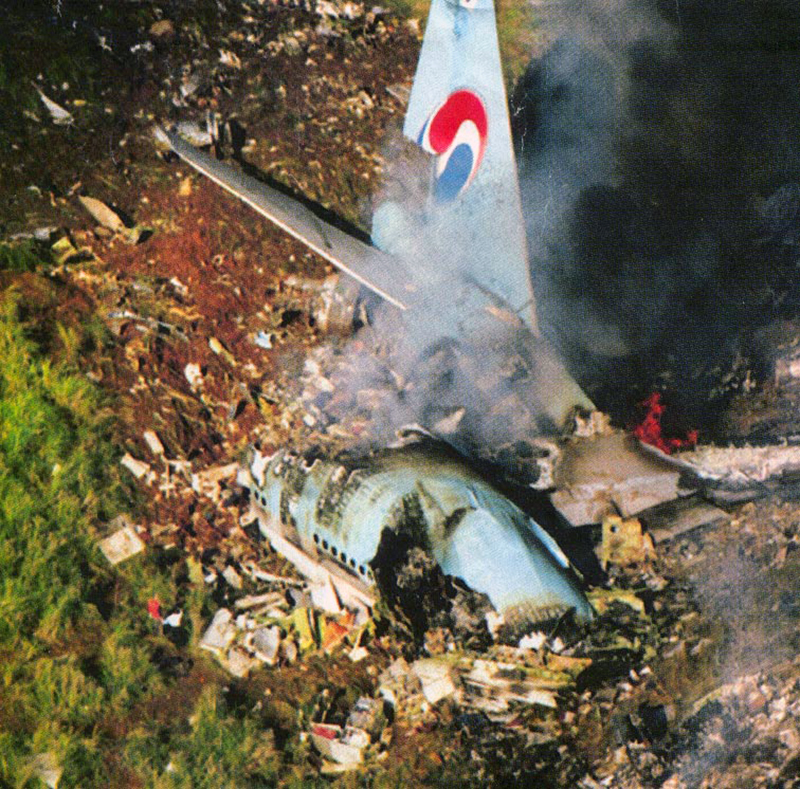



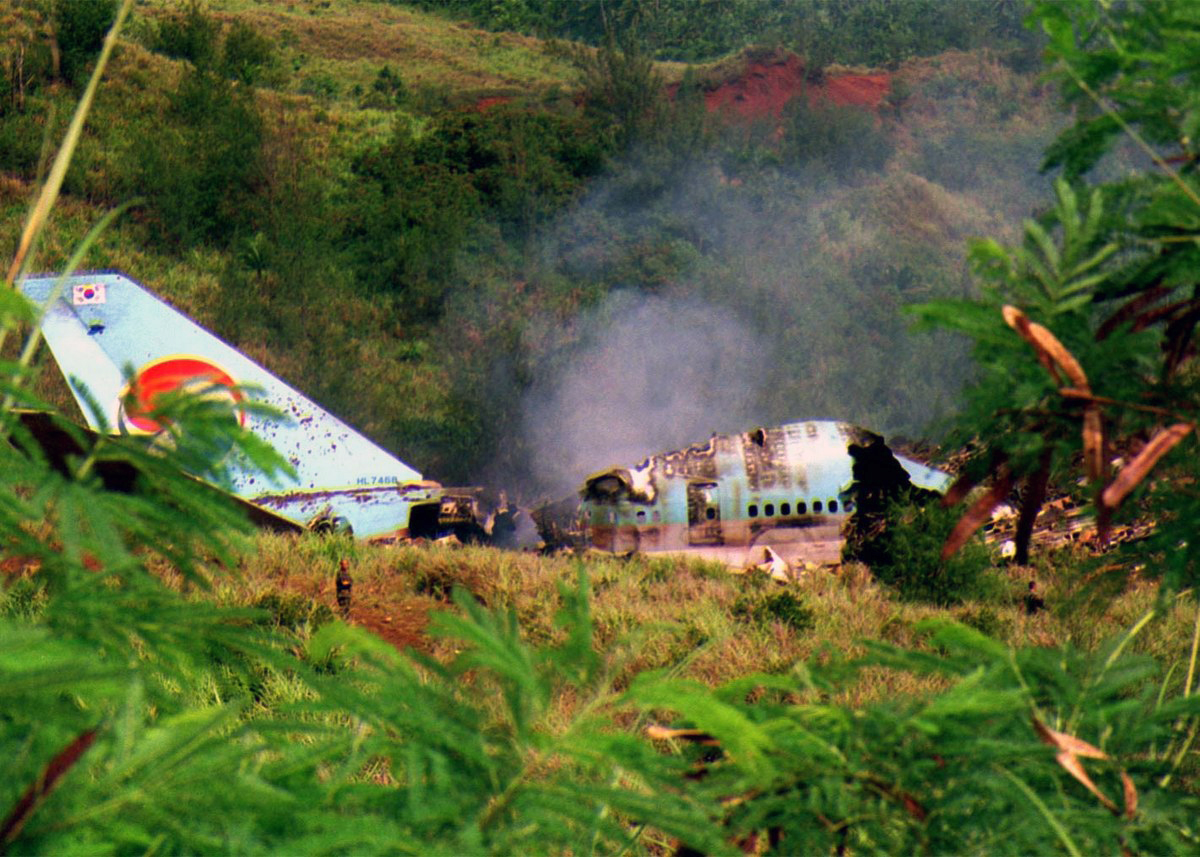

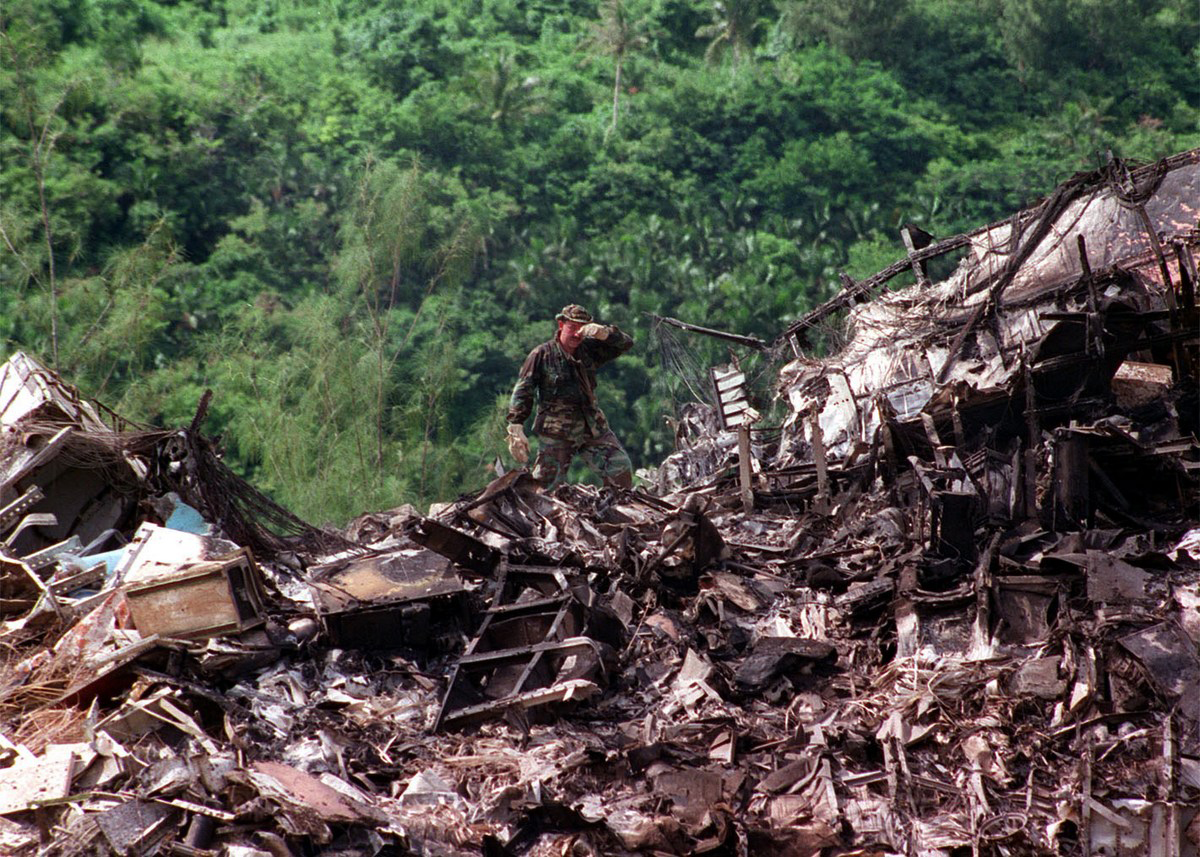
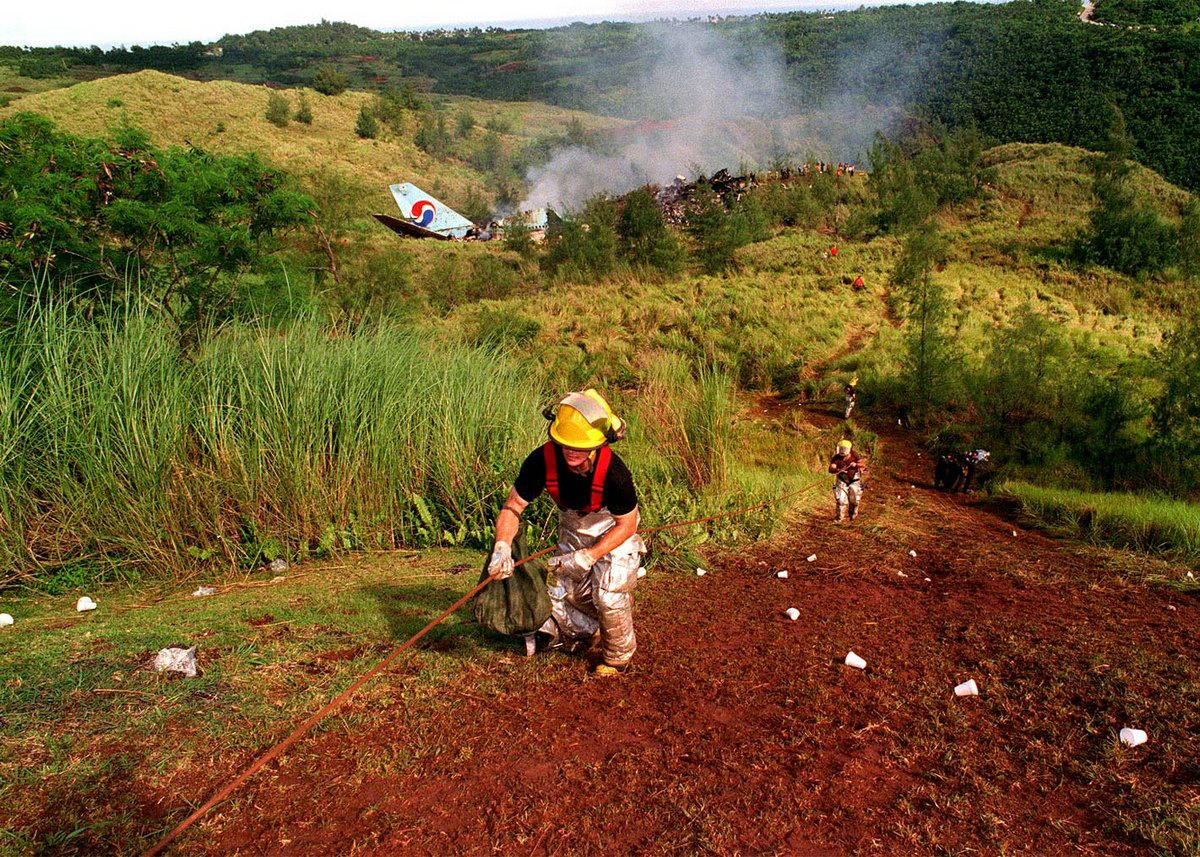
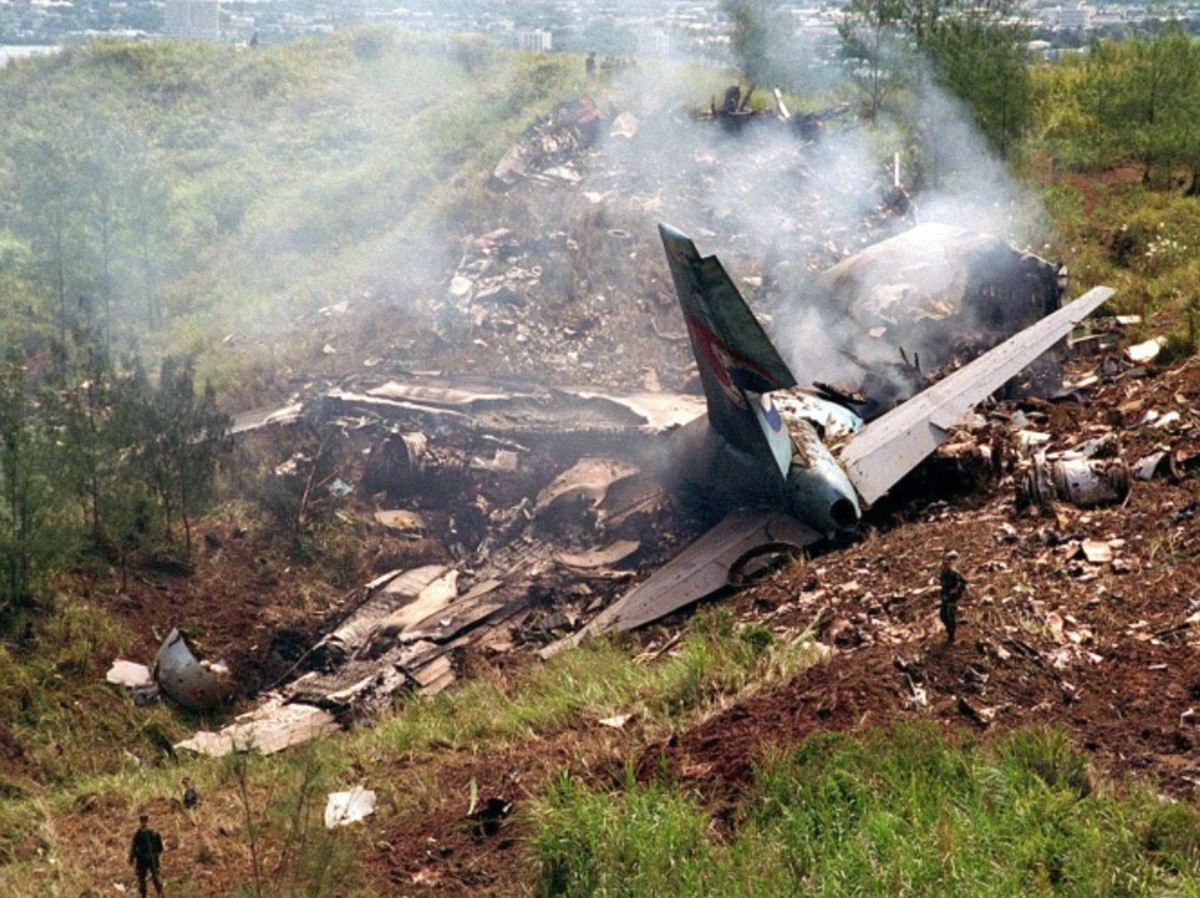
Crash of an Airbus A300B4-622R in Jeju
Date & Time:
Aug 10, 1994 at 1122 LT
Registration:
HL7296
Survivors:
Yes
Schedule:
Seoul - Jeju
MSN:
583
YOM:
1990
Flight number:
KE2033
Crew on board:
8
Crew fatalities:
Pax on board:
152
Pax fatalities:
Other fatalities:
Total fatalities:
0
Circumstances:
The descent and approach to Jeju Airport was completed in poor weather conditions with turbulences and heavy rain falls as typhoon 'Doug' was passing over. On final approach, flaps were deployed at 15°/20° as the captain was suspecting windshear and microburst conditions. Twice, the copilot informed the captain about the approach speed of 147 knots which was acknowledged. The captain continued the approach but too high on the glide, the aircraft landed too far down the runway, about 1,773 metres past its threshold. On a wet runway surface, the aircraft was unable to stop within the remaining distance (1,227 metres remaining), overran at a speed of 104 knots and eventually collided with a concrete wall and military barracks, bursting into flames. All 160 occupants were quickly evacuated, among them seven were slightly injured.
Probable cause:
Wrong approach configuration on part of the crew who completed the approach at an excessive speed and too high on the glide. Investigations did not confirm any windshear or microburst conditions. The crew failed to initiate a go-around procedure.

